Get Started for FREE
Sign up with Facebook Sign up with X
I don't have a Facebook or a X account

 Your new post is loading... Your new post is loading...
 Your new post is loading... Your new post is loading...
BigField GEG Tech's insight:
The authors combine whole-genome sequencing and deep-targeted sequencing to characterise the off-target effects of CRISPR/Cas9 system which targets Tafazzin gene. Based on in silico analysis, they estimate a likelihood of single-nucleotide variant creating off-target sites in a human genome to be ~1.5–8.5%, depending on the genome and site-selection method. geg-tech.com
BigField GEG Tech's insight:
Scientists describe the use of lentiviral shRNA to identify the involvement of an enzyme that syntheses d-serine to modulate glutamate- N-methyl-d-aspartate receptor- in regulating rat cerebellar granule neurons apoptosis. geg-tech.com
Neutralizing the RNA phosphodiester backbone enables delivery of siRNA across cell membranes.
BigField GEG Tech's insight:
The authors design the synthesis of short interfering ribonucleic neutrals (siRNNs) whose phosphate backbone contains neutral phosphotriester groups, allowing for delivery into cells. Once inside cells, siRNNs are converted by cytoplasmic thioesterases into native, charged phosphodiester-backbone siRNAs, which induce robust RNAi responses. geg-tech.com
BigField GEG Tech's insight:
Scientists report the design of a synthetic mind-controlled gene switch that enables human brain activities and mental states to wirelessly programme the transgene expression in human cells.
BigField GEG Tech's insight:
Scientists showed that concurrent delivery of gRNAs designed to target two different sites in a human chromosome introduce DNA double-strand breaks in the chromosome and give rise to targeted deletions of the intervening genomic segment. Predetermined genomic DNA segments ranging from several-hundred base pairs to 1 Mbp can be precisely deleted at frequencies of 1% to 10%, with no apparent correlation between the size of the deleted fragment and the deletion frequency. The high efficiency of this technique holds promise for large genomic deletions that could be useful in generation of cell and animal models with engineered chromosomes.
BigField GEG Tech's insight:
Scientists designed a new approach which provides a synthetic biology platform for targeting and controlling bladder cancer cells in vitro.
BigField GEG Tech's insight:
The scientists find that overexpression of several genes improves the E. coli's tolerance to exogenously added isopentenol. In this way, they improved the production of isopentenol in E. coli, with the methionine biosynthesis regulator MetR improving the titer for isopentenol production by 55%.
BigField GEG Tech's insight:
In this study, the scientists find that the grafts of hPSC-derived maturing GABAergic interneurons generate inhibitory postsynaptic responses in host hippocampal neurons. They showed that this type of neuron graft is capable of suppressing seizures and ameliorating behavioral abnormalities such as cognitive deficits, aggressiveness, and hyperactivity.
BigField GEG Tech's insight:
As human Rap1, like its mouse and unicellular orthologs, affects gene expression, the authors propose that the conservation of Rap1 reflects its role in transcriptional regulation rather than a function at telomeres.
BigField GEG Tech's insight:
The authors develop a cross-chiral RNA polymerase, using in vitro evolution starting from a population of random-sequence RNAs. The enzyme’s activity is sufficient to generate full-length copies of its enantiomer through the templated joining of 11 component oligonucleotides.
Decoy liposomes that bind and sequester bacterial exotoxins can be used to combat septicemia and infection.
BigField GEG Tech's insight:
BigField GEG Tech's insight:
The authors describe a novel CRISPR/Cas9-based approach for rapid functional investigation of candidate genes in well-established autochthonous mouse models of cancer. This rapid somatic genome engineering approach enables functional characterization of putative cancer genes in the lung and other tissues using autochthonous mouse models. |
BigField GEG Tech's insight:
This review examines current status of genome editing in mammalian embryonic stem cells and zygotes and discuss potential issues in the international regulatory landscape regarding human germline gene modification. geg-tech.com
BigField GEG Tech's insight:
This review reports the history of CRISPR biology from its initial discovery through the elucidation of the CRISPR-Cas9 enzyme mechanism, which has set the stage for remarkable developments using this technology to modify, regulate, or mark genomic loci in a wide variety of cells and organisms from all three domains of life. geg-tech.com
BigField GEG Tech's insight:
Authors introduce their routine workflow for the production of genetically engineered pigs, especially focused on the genetic modification of somatic donor cells, Somatic Cell Nuclear Transfer using in vitro matured oocytes, and laparoscopic embryo transfer. geg-tech.com
BigField GEG Tech's insight:
CRISPRdirect is a simple and functional web server for selecting rational CRISPR/Cas targets from an input sequence.
BigField GEG Tech's insight:
The authors created a platform which could enable long-term cellular recorders for environmental and biomedical applications, biological state machines, and enhanced genome engineering strategies.
BigField GEG Tech's insight:
The authors showed atomic resolution structures of a full-length Cas3, revealing how Cas3 coordinates binding, ATP-dependent translocation, and nuclease digestion of invader DNA.
BigField GEG Tech's insight:
The authors analysed the Cas9 cutting activity of 12 gRNAs in both their targeted sites and ∼90 predicted off-target sites per gRNA. Their conclusion is that off-target activity of Cas9 is low and predictable by the degree of sequence identity between the gRNA and a potential off-target site. Off-target Cas9 activity can be minimized by selecting gRNAs with few off-target sites of near-complementarity.
BigField GEG Tech's insight:
The authors manage to generate a mouse model which should help us to understand better the phenotypic variations of Noonan syndrome and serve as a preclinical tool to test forthcoming therapies based on the design of novel inhibitors of the RAS pathway.
BigField GEG Tech's insight:
The authors compare the genetic and epigenetic integrity of human nuclear-transfer embryonic stem cell (NT-ESC) lines and isogenic induced pluripotent stem cell (iPSC) lines. As iPSCs, NT-ESCs displayed clone- and gene-specific aberrations in DNA methylation and allele-specific expression of imprinted genes. The occurrence of these genetic and epigenetic defects in both NT-ESCs and iPSCs suggests that they are inherent to reprogramming, regardless of derivation approach.
BigField GEG Tech's insight:
A unique mouse model of Graves' disease, an autoimmune disorder that causes hyperthyroidism, has been developed by scientists, and new research findings may help improve the treatment of Graves' disease, experts report.
BigField GEG Tech's insight:
Scientists used pluripotent stem cells to generate functional, three-dimensional human stomach tissue in a laboratory -- creating an unprecedented tool for researching the development and diseases of an organ central to several public health crises, ranging from cancer to diabetes.
BigField GEG Tech's insight:
The authors established a CRISPR-Cas9 method enables rapid and efficient genome manipulation and unlocks the CRISPR toolset for use in fission yeast. |



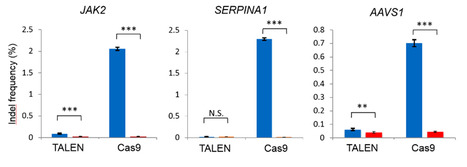

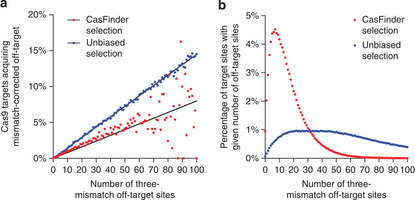

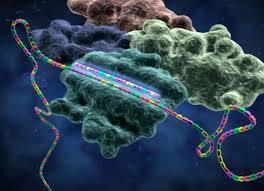

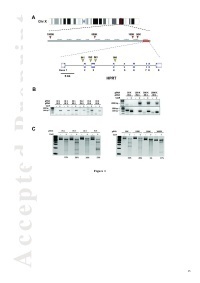









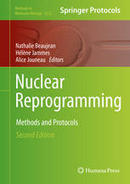






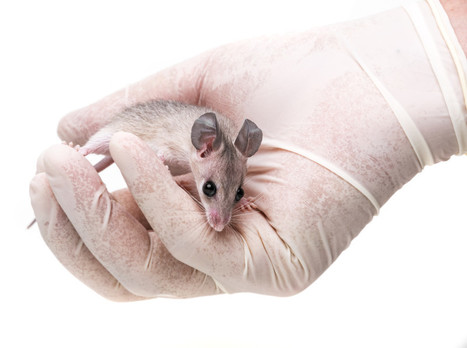







In this study, the authors investigated the relative efficiencies of CRISPR/Cas9 and TALENs in human iPSC lines for inducing both non-homologous end joining (NHEJ)-mediated gene disruption and homologous donor-based precise genome editing (HR). In these two contexts, they observed a higher efficency of the CRISPR/Cas9 system. In the first case (NHEJ), for three loci tested, Cas9-gRNAs induced between 10-100 fold more indels than did TALENs in human iPSCs, reaching the level of 0.7% to 2.5% mutation rates. About the second case (HR),the largest difference was observed at the AAVS1 site targeting where the Cas9-gRNA showed about 2-fold advantage over TALENs.
geg-tech.com